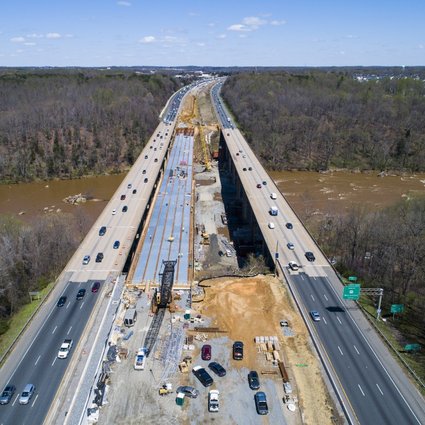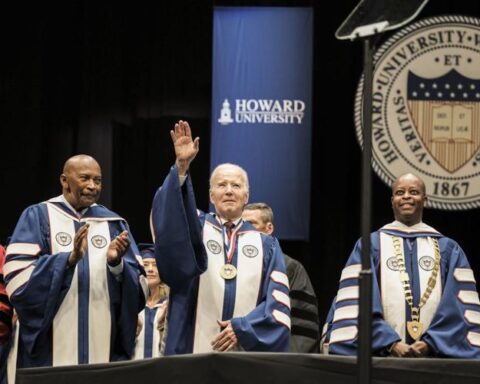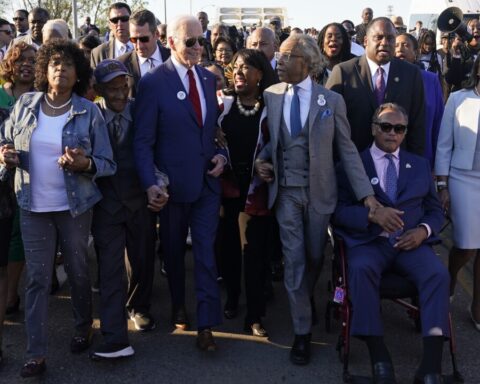President Joe Biden’s newly unveiled $2 trillion American Jobs Plan, which is designed to revive the US’s infrastructure and tackle the climate crisis over the next eight years, offers some Black Americans hope — balanced with caution.
To understand why the plan elicits hope, consider that it does something at once small and very big: It pays explicit attention to the variety of racial disparities bound up with the country’s infrastructure.
For instance, Biden would spend $20 billion on “a new program that will reconnect neighborhoods cut off by historic investments and ensure new projects increase opportunity, advance racial equity and environmental justice, and promote affordable access,” per the White House Fact Sheet.
Already, the President seems determined to keep his word.
For close to a decade, Amy Stelly, an architectural designer, has fought to remove the Claiborne Expressway that runs through her Black neighborhood in New Orleans and leaves residents to suffer from highway pollution.
Biden’s plan mentions the highway by name as an example of a previous transportation investment that, over the decades, has harmed communities.
“I’m floored,” Stelly told The Washington Post. “I’m thrilled to hear President Biden would call out the Claiborne Expressway as a racist highway.”
She added: “It’s great the federal government and this administration is recognizing that this is something that must be corrected if we are to be fair and just in America.”
In addition, Biden would spend $45 billion on replacing all of the country’s lead pipes and service lines because “no American family should still be receiving drinking water through lead pipes and service lines,” as the fact sheet puts it.
It’s not tough to grok how this move would improve the health of Black communities. The years-long water crisis that began in Flint, Michigan, in 2014, when the city started to take inadequately treated water from the Flint River, is still fresh in the US’s collective memory.
In 2017, the government-appointed Michigan Civil Rights Commission issued a 129-page report saying that systemic racism played a role in the tragedy that afflicted majority-Black Flint.
Speaking with Bloomberg Law, Dr. Mona Hanna-Attisha, whose research detected the high levels of lead in Flint children, praised the President for viewing the crisis as a warning.
“This Biden proposal learns the lessons of Flint,” she said. “We know the science of lead. We’ve known for centuries that lead is a poison. Yet, across our country, lead is like the straw through which we’re getting drinking water.”
Amara Enyia, the policy and research coordinator for the Movement for Black Lives, echoed some of Stelly and Hanna-Attisha’s sentiments.
“It’s good that the US is actually on track to confront some crucial challenges with aging infrastructure — roads, bridges, those sorts of things,” she told CNN. “I was also excited to see that caregiving is part of the plan, because usually it’s not seen as part of the country’s infrastructure.”
Enyia expanded on the importance of the caregiving plank of Biden’s plan, which would provide $400 billion to “solidify the infrastructure of our care economy” via bolstering home care services, per the fact sheet.
The President would also increase the wages of home health-care workers, who make about $12 an hour, and create an infrastructure to give caregiving workers the opportunity to join a union.
“This focus is very important because it considers not only older and disabled Americans but also the caregivers themselves,” Enyia said, before nodding to how the coronavirus pandemic has supercharged racial disparities. “We know that Covid-19 has increased the pressures that women, specifically Black and Latina women, face as workers in the care economy. So investing in this sector would really have a material impact on people’s quality of life.”
Biden’s plan has symbolic value, too.
In the immediate aftermath of an administration that regularly denigrated Black communities (among other groups), it’s no small thing for the federal government to direct its powers at furthering racial equity. Recall how in October, Jared Kushner, former President Donald Trump’s senior adviser and son-in-law, tapped into the “welfare queen” rhetoric of the 1970s and ’80s when talking about Black Americans’ supposed laziness.
In other words, the image of the federal government as a guardian — as an entity that seeks to better the lives of the governed, including the most marginalized Americans — is nothing to scoff at.
Of course, history has made Black Americans keenly aware of how quickly promises to pursue racial justice can fall by the wayside, particularly in a strained political environment.
“The New Deal taught Black America that racial justice goals are often sacrificed when ambitious political agendas face tough odds,” Willow Lung-Amam, a professor at the University of Maryland, College Park, wrote for Bloomberg in January. “Even if Biden, who has a mixed history in promoting racial justice, wanted to, he could not go it alone. FDR’s success lay in building a New Deal Coalition forged among Democratic leaders, labor unions, blue-collar workers, farmers, White Southerners and people of color. The compromises that this diverse coalition made, however, often left the latter further behind.”
Put simply, Biden’s plan is still in its early days. The coming months will reveal who’s ultimately included in the President’s far-reaching agenda, as various factions — predictably, Senate Minority Leader Mitch McConnell said that the proposal might be “a Trojan horse for massive tax hikes and other job-killing left-wing policies” — hash out the particulars.
“We know that the plan is supposed to be big and bold, but the devil is always in the details,” Enyia said. “Implementation is where we’ll see whether the plan lives up to the hype.”





